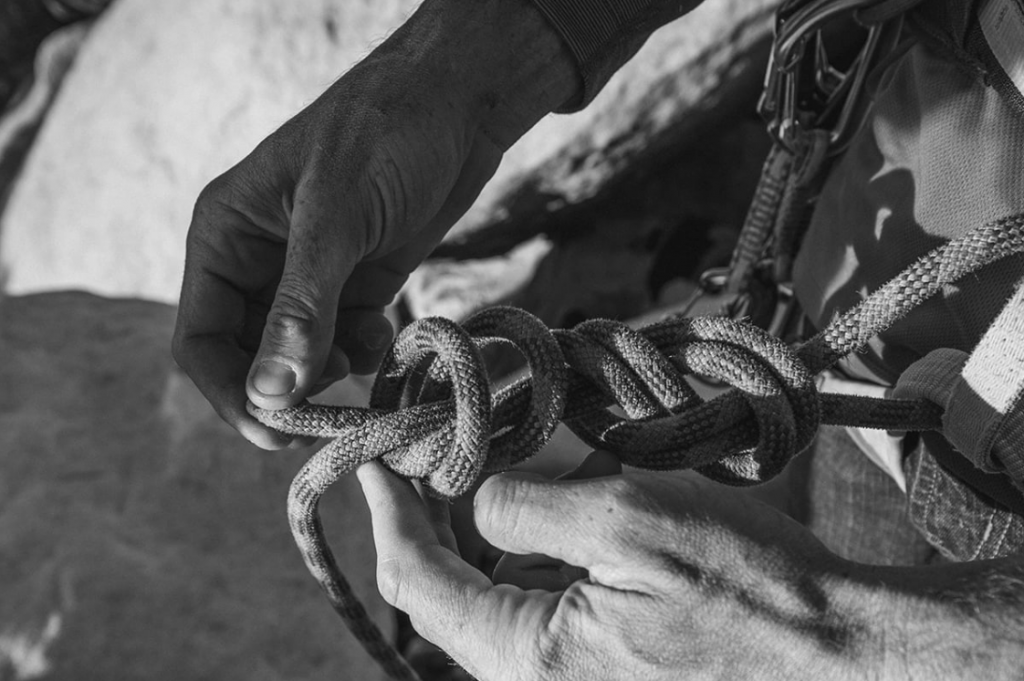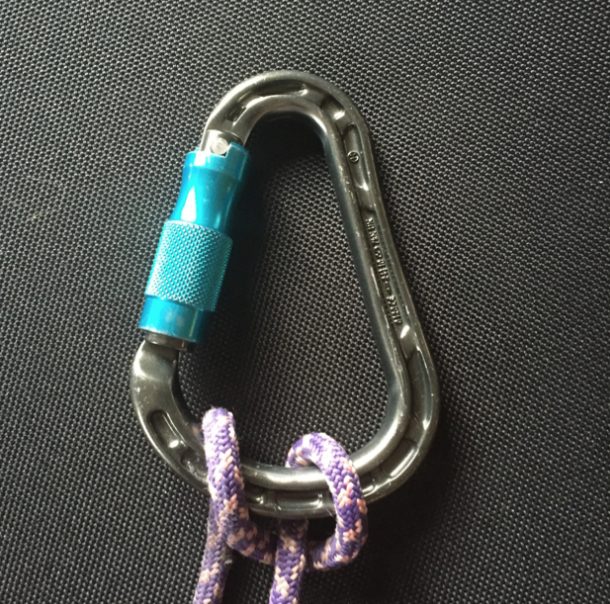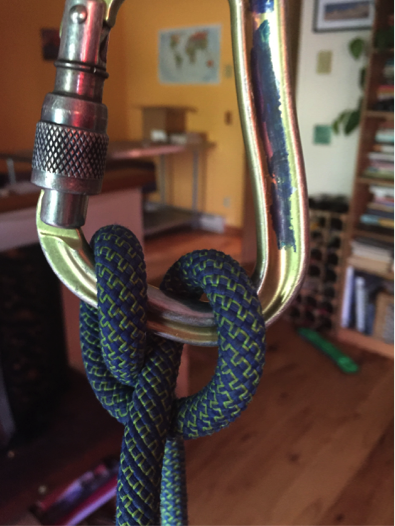
by Lindsay Mann
We asked our MTI guides, What are the five essential knots/hitches you need to know for mountaineering?
Definitions:
A knot can exist by itself. It is used to tie two ropes together or a rope to itself.
A hitch can’t exist by itself. It must be tied around something, i.e. a piece of rope or a carabiner.
Our Contributors?
- Christian Santelices: Chief Exum Guide, IFMGA/UIAGM Mountain Guide
- Jessica Baker: Lead Exum Guide, Founder/Owner Ski Divas
- Lindsay Mann: Senior Guide Rainier Mountaineering Inc., Pacific Alpine Guides
- Sheldon Kerr: Senior Guide International Mountain Guides, AMGA Certified Ski Guide
The guides identified knots/hitches that could be used for the following applications:
- Tie into a climbing rope
- Secure yourself to an anchor
- Escape a belay
- Ascend a rope
- Lower
- Belay
- Build a basic haul system
- Back up your system

Agreed on Knots/Hitches:
 Figure 8 Follow through
Figure 8 Follow through
Uses: Tying into the end of the rope through your harness, tying off to natural anchors
Pros: It is easy to see if this knot is tied correctly.
Reminder: It is important to leave at least six inches of tail.
 Münter Hitch
Münter Hitch
Uses: Allows you to belay or lower with a single locking carabiner. This is a useful hitch to have in your toolbox if you forget your belay device.
Cons: It can twist the rope, not an intuitive break position.
Clove Hitch
Uses: Tie into anchors
Pros: Can be tied with one hand, adjustable even when it is tied.
Cons: It needs to be checked, it is easy to confuse the Clove Hitch with the Münter Hitch.
Additional knot/hitches recommended but not agreed upon:
Mule Knot
Uses: This transforms the münter from a hitch to a knot.
Bowline with a Backup Knot
Uses: Tying into the rope, Tying anchors using the rope, easy to untie after it is loaded
Cons: Many of its applications can be performed with a figure 8 follow-through
Figure Eight On a Bight
Uses: Building an anchor, used for tying into the middle of the rope
Pros: Easy to identify if tied correctly
Prusik
Uses: See above under friction hitches
Pros: This friction hitch is multi-directional, verse other friction hitches like the autoblock which are directional.
Overhand
Uses: Tying two ropes together, Stopper knot
Questions, Comments, Feedback? Email coach@mtntactical.com
You Might Also Like MTI’s Alpinist Fitness Assessment
